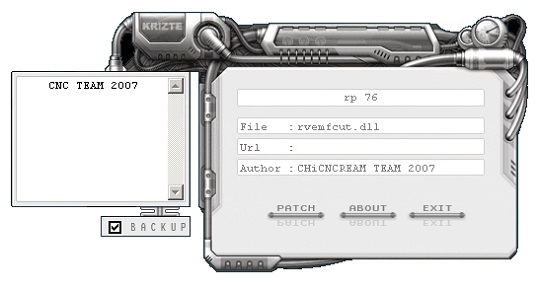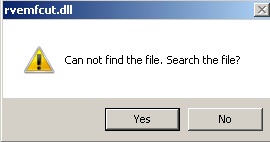PUA.Win32.Keygen.PTCH
Riskware/Patcher (FORTINET)
Windows


Threat Type: Potentially Unwanted Application
Destructiveness: No
Encrypted:
In the wild: Yes
OVERVIEW
This Potentially Unwanted Application arrives on a system as a file dropped by other malware or as a file downloaded unknowingly by users when visiting malicious sites.
It does not have any propagation routine.
It does not have any backdoor routine.
TECHNICAL DETAILS
Arrival Details
This Potentially Unwanted Application arrives on a system as a file dropped by other malware or as a file downloaded unknowingly by users when visiting malicious sites.
Installation
This Potentially Unwanted Application drops the following component file(s):
- %System%\bassmod.dll
(Note: %System% is the Windows system folder, where it usually is C:\Windows\System32 on all Windows operating system versions.)
Propagation
This Potentially Unwanted Application does not have any propagation routine.
Backdoor Routine
This Potentially Unwanted Application does not have any backdoor routine.
Rootkit Capabilities
This Potentially Unwanted Application does not have rootkit capabilities.
Other Details
This Potentially Unwanted Application does the following:
- It displays the following GUI:

- It modifies the following files when Patch button is clicked:
- rvemfcut.dll
- If the file to be patched is not found, it will ask the user to redirect to the correct path of the file:

- It requires to be executed as an administrator.
- It is used to patch the software by generating a license key.
NOTES:
It accepts the following parameters:
- /silent → no window GUI, no input
- /overwrite → overwrite existing files during file attachment export
- /backup → make backup of every file which is patched
- /startupworkdir {Directory} → set working directory for the patcher
SOLUTION
Step 1
Trend Micro Predictive Machine Learning detects and blocks malware at the first sign of its existence, before it executes on your system. When enabled, your Trend Micro product detects this malware under the following machine learning name:
- Troj.Win32.TRX.XXPE50FFF083
Step 2
Before doing any scans, Windows 7, Windows 8, Windows 8.1, and Windows 10 users must disable System Restore to allow full scanning of their computers.
Step 3
Note that not all files, folders, and registry keys and entries are installed on your computer during this malware's/spyware's/grayware's execution. This may be due to incomplete installation or other operating system conditions. If you do not find the same files/folders/registry information, please proceed to the next step.
Step 4
Search and delete these files
- rvemfcut.dll
Step 5
Scan your computer with your Trend Micro product to delete files detected as PUA.Win32.Keygen.PTCH. If the detected files have already been cleaned, deleted, or quarantined by your Trend Micro product, no further step is required. You may opt to simply delete the quarantined files. Please check the following Trend Micro Support pages for more information:
Did this description help? Tell us how we did.
